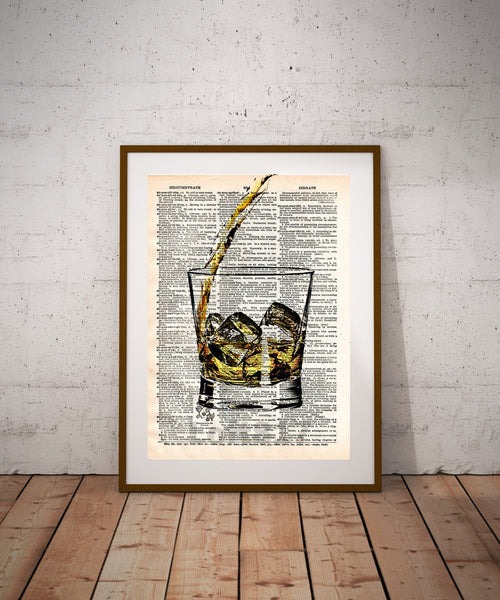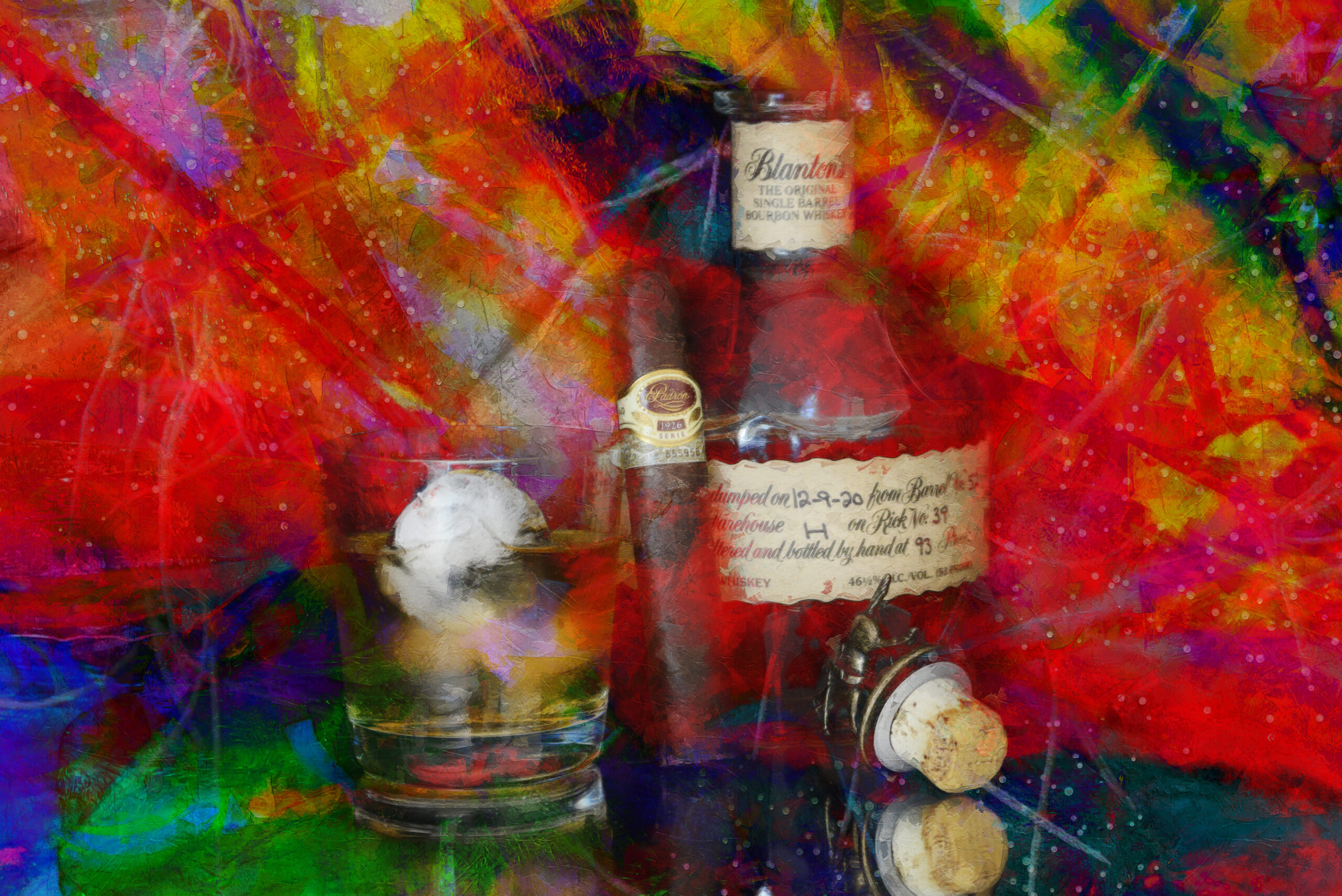Whiskey Art: Catching the Significance of Distillation in Every Brushstroke
Whiskey Art: Catching the Significance of Distillation in Every Brushstroke
Blog Article
Capturing the Essence of Bourbon Art Via Unique Visual Depictions and Designs
The art of bourbon expands beyond the liquid itself, showing up via a range of visual representations that encapsulate its storied heritage and workmanship. What remains to be revealed is how these evolving styles show not only the bourbon itself however also the changing landscape of imaginative interpretation. Whiskey Art.
The History of Bourbon Art

As whiskey manufacturing spread, so too did the need to raise its experience via art. From the detailed engravings on very early casks to the elaborate tags of contemporary bottles, each component shows an unique creative vision, working as an aesthetic narrative of the bourbon's heritage.
In the 18th and 19th centuries, the surge of the industrial change additionally enhanced scotch art, resulting in innovative product packaging and advertising that captured consumer focus. Artists and designers started trying out visual appeals, imbuing whiskey-related images with symbolic definitions that conveyed notions of craftsmanship, area, and practice.
Today, whiskey art remains to progress, mixing traditional methods with contemporary art types. Realism Art. This ongoing dialogue between the spirit and its graph underscores the enduring bond between scotch and society, improving the total experience for fanatics worldwide
Iconic Container Layouts
While many factors contribute to the allure of whiskey, iconic container layouts play a critical role fit consumer perception and boosting the total experience. The aesthetic discussion of scotch bottles is not merely an aesthetic factor to consider; it offers as a bridge in between the consumer and the product, stimulating emotions and setting expectations.
Unique forms, products, and closures can boost a bourbon brand's identity, making it quickly identifiable on crowded racks. The timeless Glenfiddich container, with its elegant conical silhouette, conveys a feeling of custom and craftsmanship, while the strong, modern layout of the Balvenie bottle reflects technology and class. The usage of colored glass or one-of-a-kind structures can recommend the high quality and personality of the bourbon within.
Renowned layouts typically incorporate elements of social heritage, signifying the brand's background and connection to its origins. Brands like Jack Daniel's use a straightforward, durable design that resonates with its American scotch heritage. Ultimately, the effect of bottle style prolongs beyond simple functionality; it envelops the significance of the brand, welcoming customers to indulge and explore in the rich tapestry of bourbon society.
Label Artwork and Branding
Container layouts usually establish the phase of what consumers can anticipate, yet tag artwork and branding play an equally substantial duty in interacting a scotch's identity. The tag functions as the first factor of get in touch with between the item and the consumer, encapsulating the essence of the bourbon within its visual elements.
Reliable label art work integrates images, color, and typography to develop a narrative that reverberates with the brand's heritage and target market. A tag featuring intricate pictures and classic font styles might stimulate a sense of tradition and craftsmanship, appealing to aficionados. In comparison, bold colors and modern-day design aspects could attract a more youthful demographic seeking technology and excitement.


Digital Photography and Visual Storytelling
Capturing the significance of scotch via digital photography and visual narration is an art type that elevates the brand name experience. This medium goes beyond mere item representation, diving into the intricate stories that surround each container. By employing engaging imagery, photographers can stimulate feelings that resonate with customers, eventually building a deeper link to the whiskey brand name.
Aesthetic storytelling in bourbon photography usually uses abundant structures, lighting, and make-up to highlight the distinct features of the spirit. The interplay of light and darkness can emphasize the amber colors of whiskey, while the option of history elements-- such as rustic barrels or stylish glass wares-- can reinforce the brand name's heritage or way of living associations.
Additionally, capturing the ritualistic elements of bourbon intake, from the pouring to the tasting, Our site welcomes visitors right into a sensory experience, allowing them to think of the tastes and aromas that await. Each photo not just showcases the item yet additionally informs a story of workmanship, custom, and the minutes that bourbon can boost - Bourbon Art. Thus, photography ends up being an effective device in expressing the identification of bourbon brand names, placing them within the more comprehensive social landscape
Arising Fads in Bourbon Art
The advancement of bourbon art is increasingly shaped by contemporary fads that mirror more comprehensive social changes and customer preferences. One popular pattern is the combination of sustainability into art practices. Artists are currently making use of environment-friendly procedures and recycled materials to create whiskey-themed items, reverberating with ecologically mindful consumers. This change not just highlights the value of sustainability however likewise improves the narrative bordering scotch production.
Additionally, electronic art has risen in popularity, enabling ingenious depictions of scotch. Artists are leveraging modern technology to craft immersive experiences, such as augmented reality installations that engage customers and offer a deeper understanding of whiskey's cultural significance. This pattern also includes social media systems, where visually striking material amasses interest and cultivates community amongst enthusiasts.
Moreover, collaborations between bourbon brands and artists are coming to be more widespread. These collaborations generate limited-edition packaging styles and unique art work that celebrate both the craftsmanship of bourbon and the creativity of musicians. As whiskey art remains to develop, these arising patterns will unquestionably form its future, cultivating a dynamic intersection of society, sustainability, and technology within the scotch community.
Conclusion
In conclusion, the art of bourbon incorporates a varied variety of graphes that reflect its rich heritage and craftsmanship. From renowned bottle designs and elaborate tag art work to engaging photography, each aspect adds to a wider narrative that enhances the consumer's experience. As arising patterns, such as digital art and sustainability, remain to shape this imaginative landscape, the diverse identification of bourbon continues to be a withstanding resource of social link and expedition.

In final thought, the art of scotch encompasses a diverse selection of aesthetic representations that reflect its rich heritage and workmanship.
Report this page